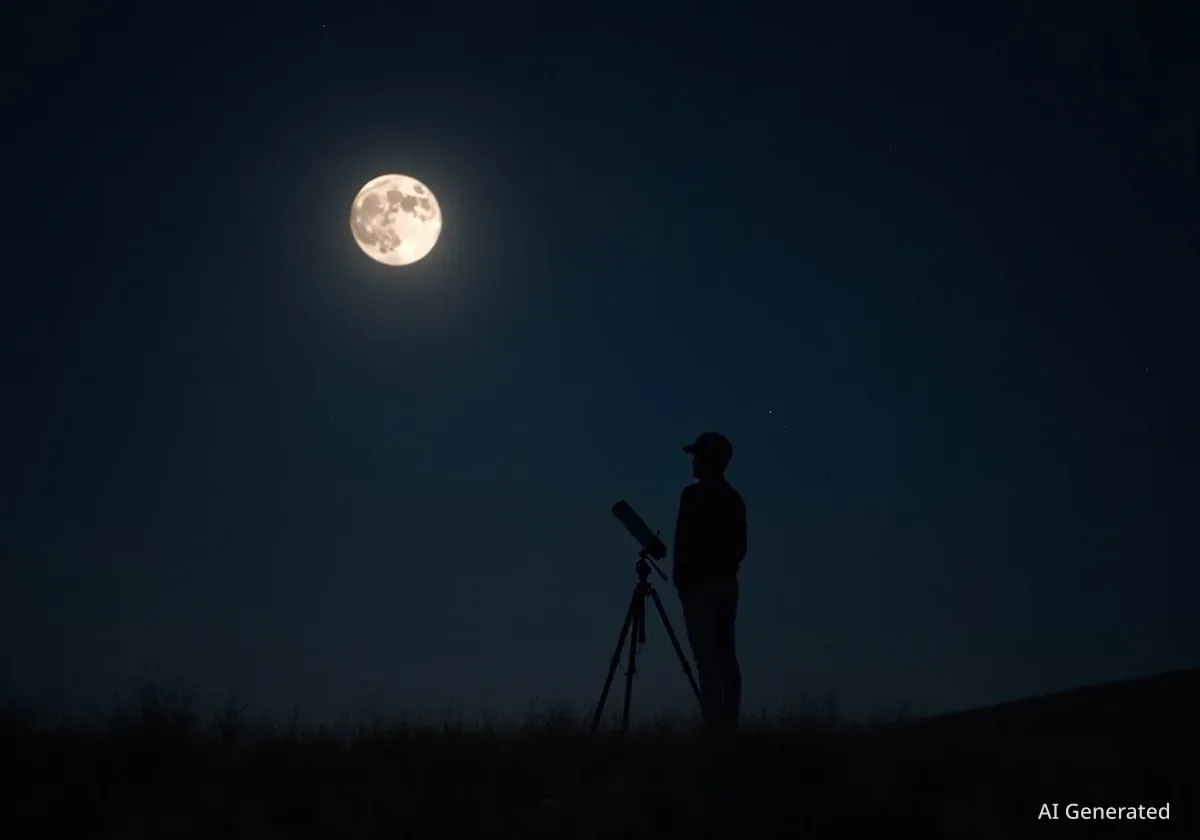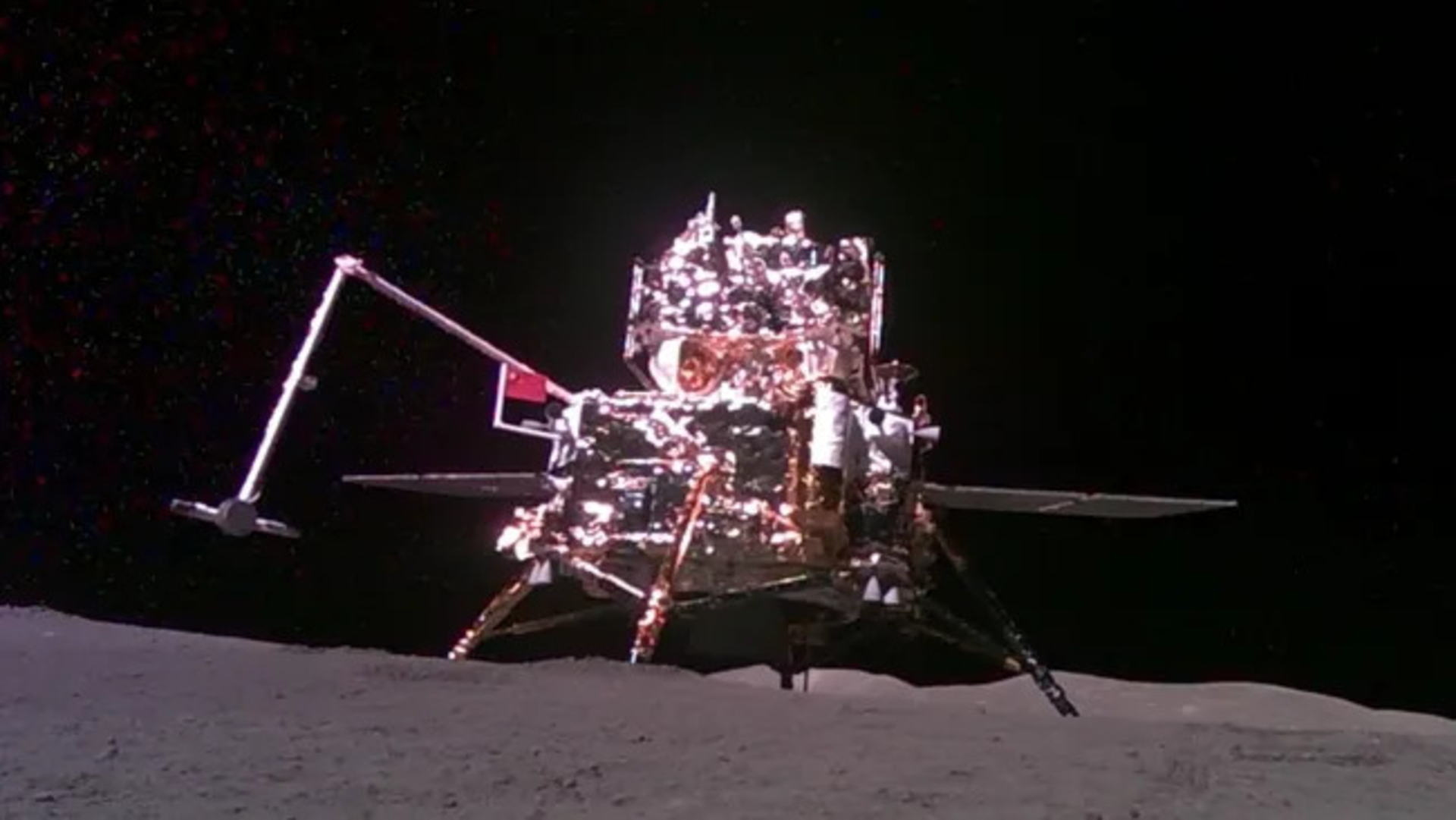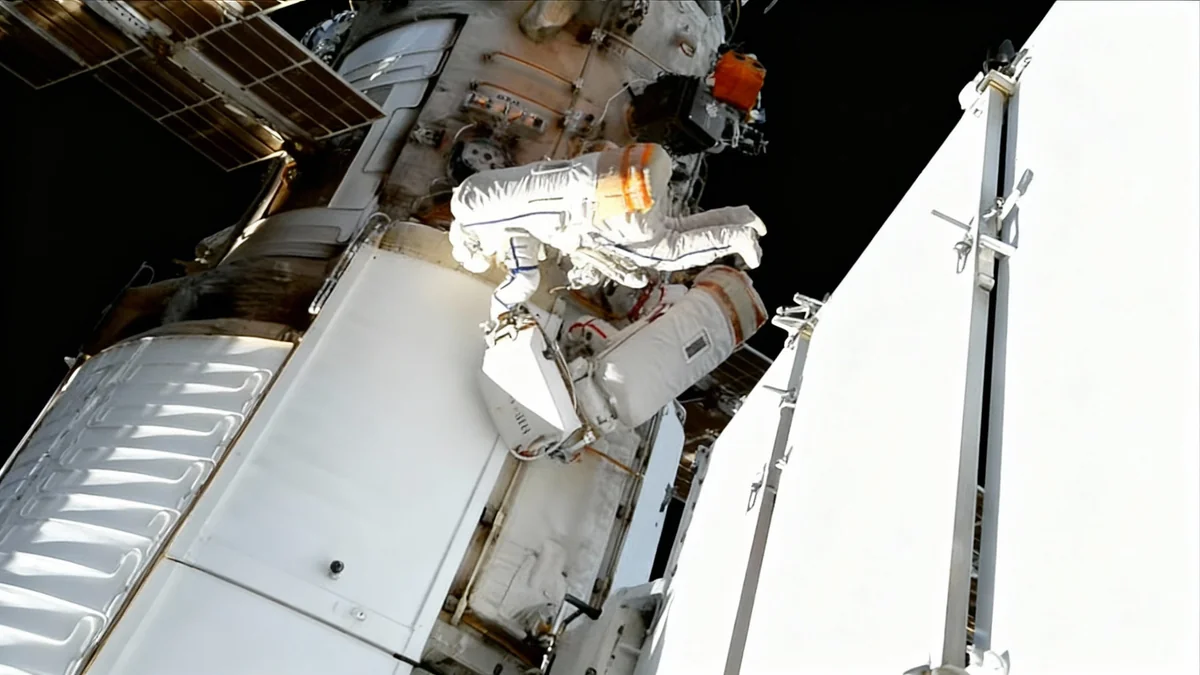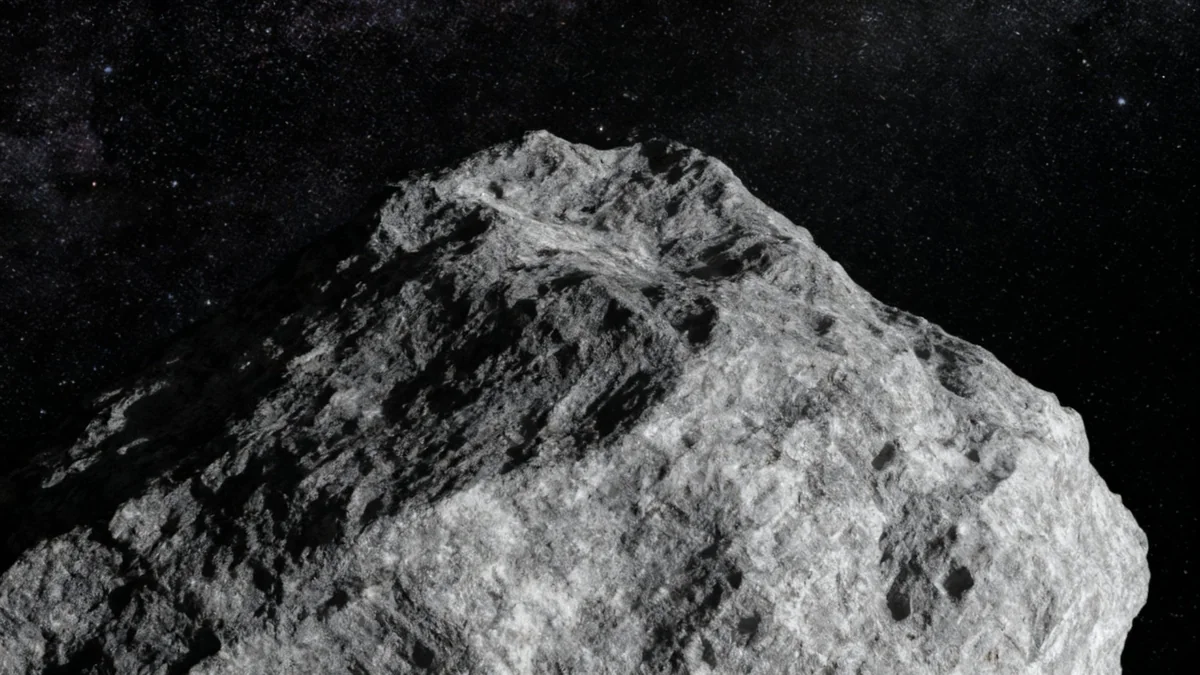Skywatchers have an opportunity to see a notable celestial event on the night of October 13, 2025. The Moon will appear close to Jupiter in the sky, offering a clear view for observers in the late night and early morning hours. The two objects will rise together and be visible to the naked eye.
This event provides a chance for both casual observers and amateur astronomers to see the solar system's largest planet alongside Earth's natural satellite. The pairing will be visible from the late evening of Monday, October 13, through the predawn hours of Tuesday, October 14.
Key Takeaways
- Event: The Moon and Jupiter will appear close together in the night sky.
- Date and Time: The pairing will be visible starting late on Monday, October 13, 2025, and into the early morning of Tuesday, October 14. They rise shortly before midnight local time.
- Location in Sky: Look toward the east-northeastern horizon.
- What to See: The last quarter Moon will be positioned near the bright planet Jupiter. Binoculars or a small telescope will reveal Jupiter's four largest moons.
Viewing Guide for the Moon and Jupiter Event
To see this celestial pairing, you should look toward the east-northeastern horizon late on Monday evening. The Moon, which will be just past its last quarter phase, is expected to rise just before midnight local time. Jupiter will be shining brightly nearby.
The two celestial bodies will be separated by approximately 6 degrees in the sky. As a reference, your clenched fist held at arm's length covers about 10 degrees of the sky. This means the Moon and Jupiter will be separated by a little more than half a fist's width.
An Illusion of Proximity
While they appear close, the Moon and Jupiter are at vastly different distances from Earth. This alignment is an illusion caused by our perspective from Earth. The Moon is about 235,000 miles (378,000 kilometers) away.
In contrast, Jupiter is located approximately 477 million miles (768 million kilometers) from Earth. This distance is more than 2,000 times farther than the Moon.
For the best viewing experience, find a location with minimal light pollution and an unobstructed view of the eastern horizon. The pair will climb higher in the sky as the night progresses, making them easier to observe in the hours before dawn.
Observing Jupiter in the Night Sky
Jupiter is currently one of the most prominent planets for observation during the fall and winter seasons. It is second only to Venus in brightness, but since Venus is primarily a morning object at this time, Jupiter dominates the late-night sky.
The planet will become visible above the east-northeast horizon around 11:40 p.m. local daylight time. However, for those using telescopes, sharper views are typically achieved when an object is higher in the sky. Jupiter will reach an altitude of 30 degrees—a point considered well-placed for detailed observation—at approximately 2:30 a.m.
Jupiter's Position in Gemini
At present, Jupiter is located within the constellation of Gemini, the Twins. Its position near the star Kappa Geminorum places it in a part of the sky where the ecliptic—the path of the Sun, Moon, and planets—reaches its northernmost point. This positioning is advantageous for observers in the Northern Hemisphere, as it means the planet will appear higher in the sky and remain visible for a longer duration.
The maximum altitude Jupiter will reach varies by location. Observers in northern U.S. cities like Minneapolis will see it at about 65 degrees, while those in southern locations like Houston will see it as high as 80 degrees above the horizon around sunrise.
What a Telescope Reveals
Using a telescope can significantly enhance the viewing experience of Jupiter. Even a small telescope or a pair of steadily held binoculars can reveal fascinating details about the gas giant and its moons.
Jupiter's Atmosphere and Moons
Through a telescope, observers can distinguish the planet's distinct atmospheric features. These include:
- Cloud Belts: Light and dark bands that run parallel to Jupiter's equator.
- The Great Red Spot: A massive, long-lived storm in Jupiter's southern hemisphere. The spot has been observed to be shrinking over time; it once could fit two or three Earths but can now only fit about one.
- Galilean Satellites: The four largest moons of Jupiter, discovered by Galileo Galilei.
During the night of October 13-14, all four Galilean moons will be visible. Viewers can expect to see Callisto, Europa, and Io aligned on one side of the planet, with Ganymede appearing by itself on the opposite side.
A Future Celestial Event to Mark on Your Calendar
This upcoming pairing of the Moon and Jupiter is a preview of an even more significant event in the near future. Observers in North America should mark their calendars for a rare celestial alignment in 2026.
On the morning of October 6, 2026, much of North America will witness an occultation of Jupiter, where the waning crescent Moon will pass directly in front of the planet, temporarily hiding it from view.
Such events, known as nocturnal occultations of Jupiter, are uncommon for any specific location. According to astronomical records, the last widely visible event of this kind for most of the United States occurred in December 2004.
The 2026 occultation is anticipated to be a major highlight for skywatchers, as the sight of a crescent Moon eclipsing a brilliant planet like Jupiter is visually striking. The event will also offer a unique opportunity to watch the Galilean satellites disappear and reappear from behind the Moon's edge when viewed through binoculars or a telescope.





